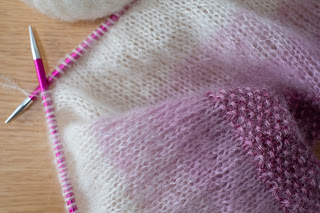Every knitter is unique. Be it beginner, intermediate or even an advanced knitter, each one has their own style. Knitting is fun, you get to use your creativity and transform yarn with your knitting needles into a garment or accessory or a wonderful gift for a loved one. If you're new to knitting, you are taught the strings of the craft by a mentor or an online source. But when you gain experience and branch out to for advanced knitting projects, you will need to keep a few knitting tips in mind for a smooth crafting experience. Even if you are a beginner working with basic knitting projects, there are a few tips that can help you get started and make your knitting journey more enjoyable.
- Practice makes perfect
Knitting
is not just about the finished product, it's also about the process. Enjoy the
feeling of the yarn running through your fingers, the rhythm of the needles,
and the sense of accomplishment when you complete a project. Knitting takes
practice, so don't get discouraged if your first few projects don't turn out
perfectly. With practice you'll improve over time.
- Choose the right yarn
Different
yarns have different properties, so choose a yarn that's appropriate for your
project. If you are making socks, the yarn requirement is different than when you
are making a blanket, therefore before you begin a project consider factors
like fiber content, weight, and texture. This will help you work faster and
smoothly.
- Use the right tools
The
right tools is the main reason for the success of your project. Get started
with right
knitting needles. This means not just the size and type mentioned by a
pattern designer, but by also making a gauge swatch. If you are going to go
back and forth, work with single pointed needles or circulars (of the right
length). If it’s knitting in the round, the iotions are double pointed needles
(DPNs), circular knitting needle (a size smaller than the circumference of the
project), two circulars or magic loop technique (with a length that is between
32” to 47”.
Besides, work with stitch markers,
measuring tapes, wool needles, blocking tools, etc.
- Read the pattern carefully
Before
you start knitting, read the pattern carefully to make sure you understand the
instructions. Pay attention to things like gauge, stitch counts, and shaping
instructions.
- Take breaks
Knitting
can be relaxing, but it's important to take breaks to avoid hand and wrist
strain. Take breaks every 30 minutes or so to stretch your hands and rest your
eyes.
- Don't hesitate to ask for help
If
you're stuck on a pattern or technique, don't be afraid to ask for help. There
are many online resources and knitting communities that can provide support and
advice. Even for small knitting mistakes, get help. Mistakes happen, even to
experienced knitters. Don't be afraid to make mistakes, and don't be too hard
on yourself when they happen. They can be fixed or even incorporated into your
design. Knitting accessories are a great help to smooth knitting experience and
avoid mistakes. Work with stitch markers to avoid common knitting mistakes. You
can also keep a handy repair hook or crochet hook for dropped stitches.
Learning to tink (unknit) can also be helpful to correct your silly mistakes.
- Have fun
Knitting
should be fun, so choose projects that you enjoy and don't be afraid to
experiment with new techniques and patterns.
With
these helpful tips, continue enjoying the craft of knitting! With Knitter’s Pride explore the
widest range of knitting needles and knitting accessories. From stitch markers
to wool winders, handy repair hooks to scissors, bags and cases to keep you
organized, get ready for a smooth knitting experience.

